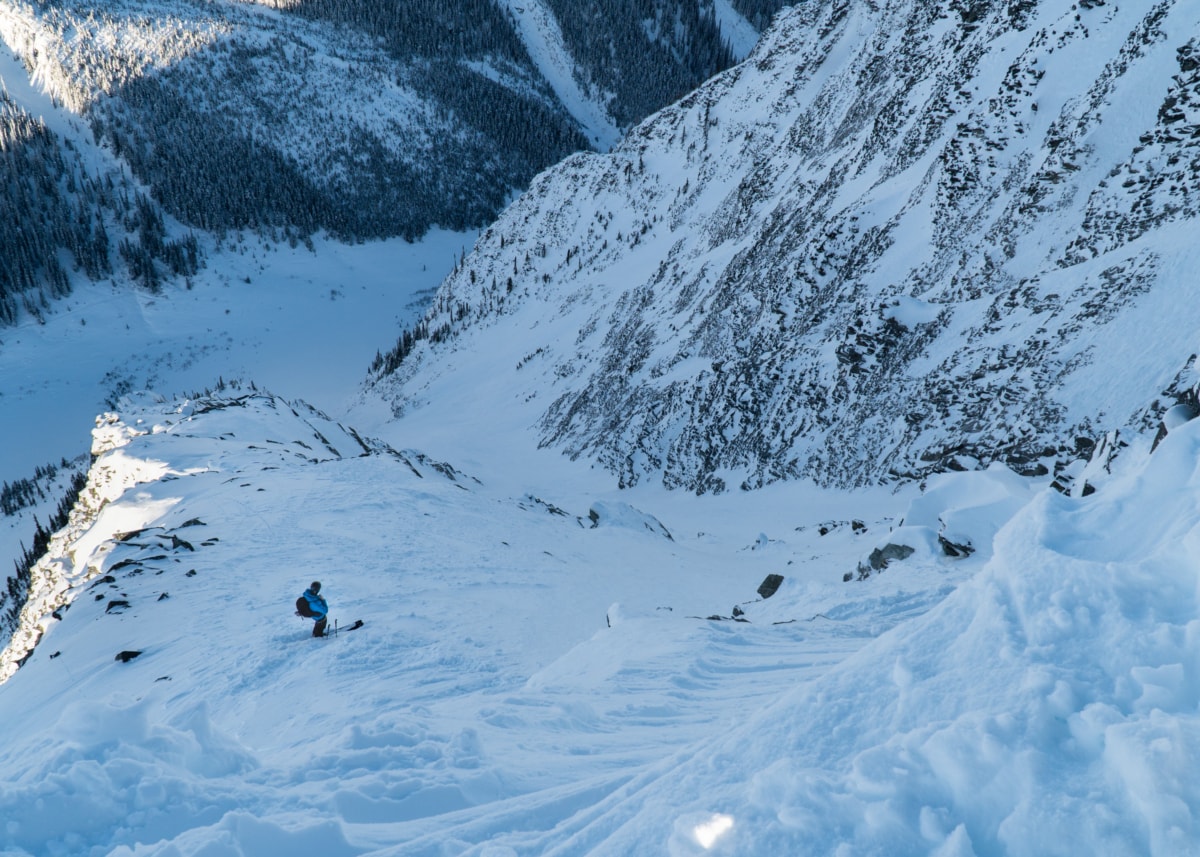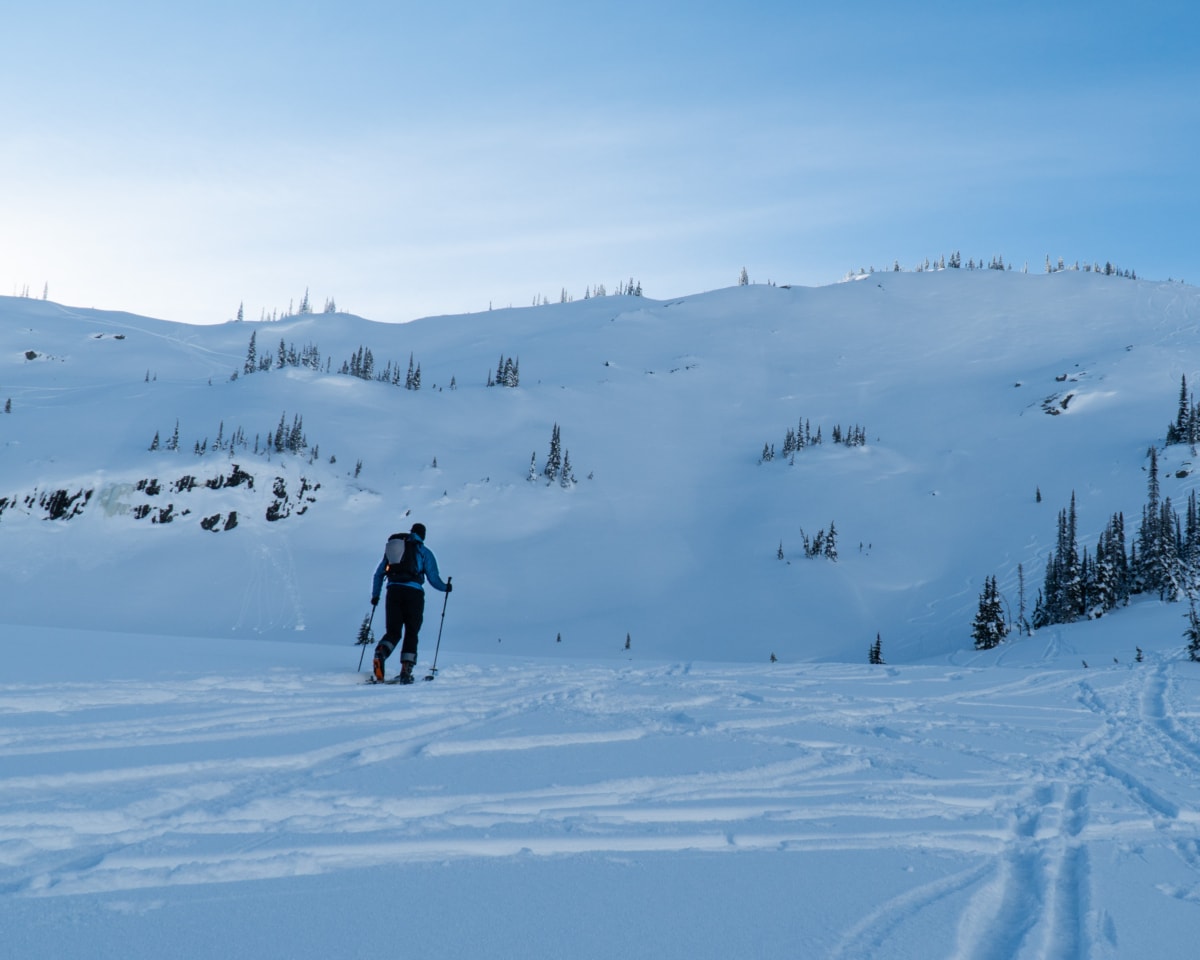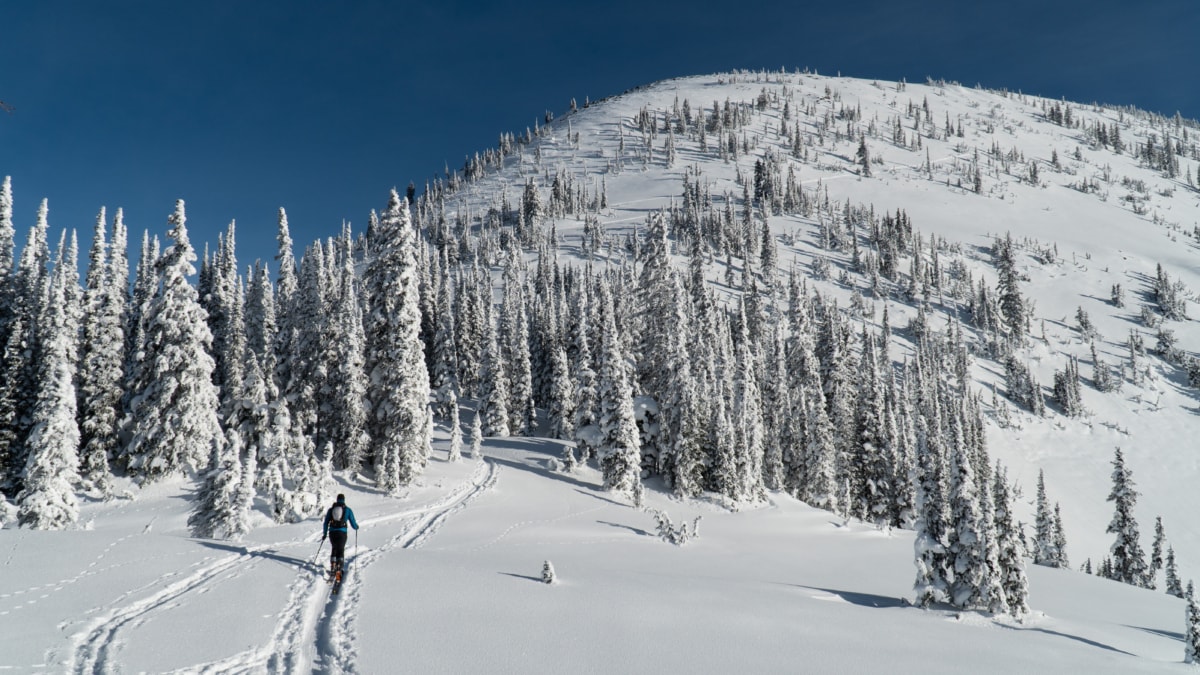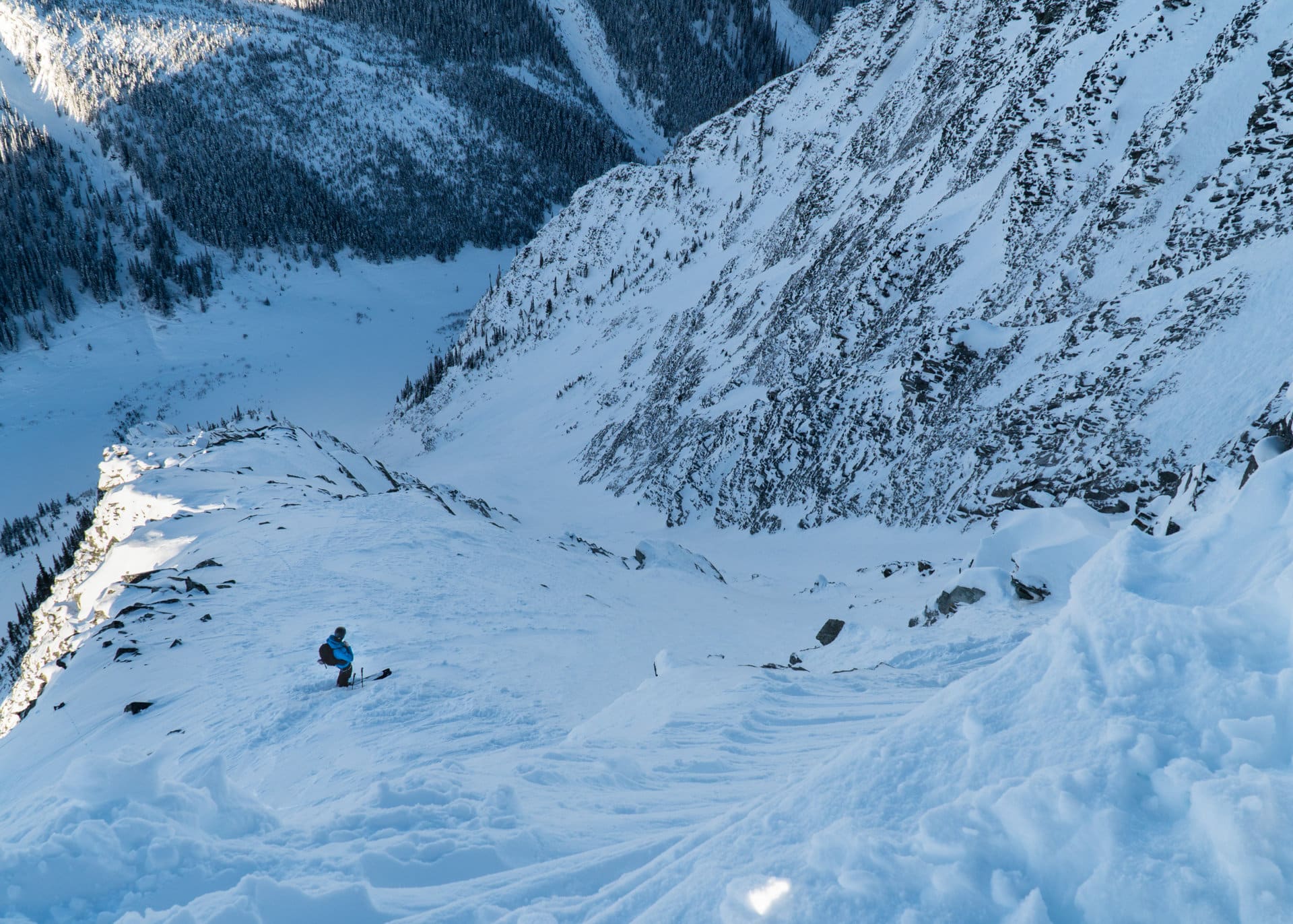STS Couloir is an absolute beast of a run… and a notorious one at that. Nestled in the north face of Cheops Mountain (2581m) near the headwaters of Connaught Creek, the route offers 700 meters of epic north-facing couloir skiing with an average slope angle of 45 degrees. As a matter of fact, it’s one of Rogers Pass’ more popular ski-mountaineering routes, requiring a short rappel to get through the large overhanging cornices looming over the entrance. Even by the Pass’ standards, that’s a hell of a run. As for the name itself, STS couloir, originally Cheops North 4 avalanche path, was renamed after the Strathcona Tweedsmuir School avalanche incident – I’ll let you dig more into that subject on your own. The route takes you through the imposing Connaught Valley all the way to Balu Pass, a popular ski touring area. As I’ve mentioned many times in previous articles, travelling through this valley exposes you to seriously hazardous avalanche paths that require careful consideration before crossing. Keep that in mind while you’re passing through.
This route is located within a Winter Restricted Area (WRA) governed by the Winter Permit System. Please check the WRA status before travelling through it.
Related: Christmas Couloir, Rogers Pass: Near-Death Avalanche

Report from December 15, 2022
We began our day at the Rogers Pass Discovery Center, at the highest road-accessible point of Glacier National Park (of Canada). It must have been closer to 9 AM, a late start by ski-mountaineering metrics. Thankfully, it doesn’t take very long to reach the top of STS Couloir, as it barely pokes out of the treeline terrain. We glided along Connaught Creek, rehearsing in our minds what the route would look like. It’s the early season after all during a low-snow year. Things could get pretty rugged in there.

After crossing the massive Grizzly Slidepath, still covered in thick alders, we ascended the valley along the Balu Pass Trail, now covered in packed snow and surprisingly with little rocks showing. After an hour or so, we traversed across the Cheops North 4 avalanche path, the notorious STS couloir – our day’s objective. As expected, it was pretty rugged in there. While the cornices at the top seemed small and manageable, a benefit of our thin snowpack so far, the upper section was covered in exposed rocks, a true shark attack in there. In the middle section, we could clearly see a rock/ice choke as well as tossed-up snow from previous dry loose avalanche activity (now refrozen). That all sounds like a fun adventure!

After we’ve scrutinized the couloir from across the valley, safe from potential avalanches, we continued along to Balu Pass. The morning’s biting wind was slicing through our bones. A glimmer of hope arose as we saw the low-lying sun shining upon the top of the hill. The Beatles were ringing through my ears: “Here comes the sun!”

We gained Balu Pass to the climber’s left as fast as possible and gazed upon Cougar Mountain and its valley below. Sure it’s a pretty mellow ski from there, but the views are absolutely incredible! We marched across the pass, approaching the Cheops West Ridge. From here we had two options, brave the windswept ridge crest, with little snow and much rocks, or ascend the west face, sparsely treed but with a deeper snowpack. Ultimately, we weren’t too worried about our snowpack at this location, so we climbed the west face.

After half an hour, we gained the first bump which lined us up with the standard entrance of the Cheops North Bowl and Nicci’s Notch. The sun was shining, the views were glorious and the snow was still cold. Perfect! After a short snack break, we continued our climb up the west ridge, with one last steep slope between us and the entrance of STS Couloir. We borrowed an existing uptrack and modified some of the switchbacks. I was hoping to minimize our exposure to the progressively deeper, but still very faceted snowpack as we strayed away from the ridge. I couldn’t quite tell what was wrong with it, but it just didn’t feel good. Sometimes, it’s best to trust your instinct.

After the short sprint up the slope, we gained the entrance to STS Couloir. I set up a fixed line off a questionable tat nest wrapped around a small frozen tree covered in rime ice. We both carefully approached the cornice using a prusik backed up by an overhand knot at the furthest extent. Jack ski-cut the top entrance and triggered a 10-cm deep wind slab. Unfortunately, the cut only cleaned up part of the slope, with large portions of the slab still intact. We both weren’t comfortable with those odds as we risked toe-triggering the rest of the wind slab as we started our descent. I tip-toed along the ridge to the lowest potential entrance. Bingo! I saw a narrow ramp, about as wide as our skis that led us to a flat bench rolling into the central couloir.
A note on the cornice rappel
We leapfrogged down the couloir, communicating important information via our radios. We both hit quite a few buried rocks in the upper third of the run. The skiing was definitely challenging. The snow was a mix of old wind crust, refrozen crud and the occasional powder. We regrouped at the ice/rock choke midway down the couloir. With careful consideration, we ended up straight-lining through the choke as our bases skidded over the ice. It was a lot smoother than we had anticipated. We skied down the bottom third on delicious supportive powder. This was our reward for the horrid conditions up top.
After a few wholesome high-fives, we proceeded down the Connaught Valley following the bobsleigh track of an uptrack. With no one in sight, we arrived at the parking lot in record time. While the conditions were challenging at the best of times, I actually enjoy the tough skiing as long as I know what I’m getting into, especially when it comes to strategizing a descent through a complex couloir. See you on the slopes!
Route Info
For more beta on my adventures, check out the Route Map. This online map interface is a repository of Beyond Our Peak’s published ski touring and mountaineering routes. It’s the best way to browse through trip reports. Give it a shot!
